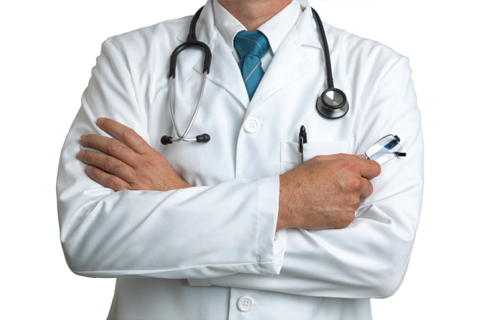Vain about Veins

You work out; you challenge your body to be the best it can be. You watch your weight and monitor your nutrition. You run miles and do lunges. You may have the fittest legs around but you may not be happy with the way they look. Unsightly veins, such as spider veins (small, red lines in clusters) or varicose veins (knotted, ropy, larger veins), may make even the fittest athlete feel uncomfortable about his or her appearance. Treating these veins may be purely cosmetic or it might be a matter of correcting a painful condition.
Twenty-five percent of women and 18 percent of men suffer from varicose veins. While some cases are congenital, many cases are acquired; pregnancy, obesity, past trauma, and prolonged periods of standing (such as for work) can all contribute. While varicose veins can occur anywhere, they are most likely to develop in the legs due to gravity. As we age, we are more likely to see vein problems though very young people can develop varicose veins.
Recovery time for most treatment requires a relatively short period away from strenuous workouts. Often, patients must wear compression stockings during recovery. For these reasons, many athletes choose to schedule procedures during a cooler month or prior to triathlon season. In this article, Dr. Clement provides the medicals facts behind a variety of treatments.
The venous system, especially of the legs, is a very complex and variable system. Arteries carry blood with oxygen while veins return oxygen-depleted blood to the heart. Valves in the veins make sure that the blood travels back to the heart. When the vascular valves in veins become incompetent, pressure shifts to the superficial veins under the skin and, with time, these veins become dilated. Doctors identify these dilated veins by size: varicosities, (four to five millimeters in diameter), reticular veins (one to two millimeters in diameter), and telangiectasia (one millimeter in diameter). Patients with dilated veins may describe symptoms that include feelings of heaviness, pain, itching, and swelling.
Sclerosing therapy is the treatment of choice for smaller vessels (from one to as large as three millimeters in diameter). The solutions most frequently used in sclerosing therapy are sodium tetradecyl sulfate (STS) and polidocanol, each with a saline dextrose solution. The number of veins and amount of area that can be covered is limited by the amount of solution that can be safely used, which is usually a maximum dose of ten cubic centimeters of the sclerosing solution.
Larger veins (three to five millimeters) are best treated with endovenous laser or radiofrequency ablation. This treatment involves inserting an optical fiber into the vein; laser light within the infrared spectrum is shown, which causes the vein to contract, and the laser is slowly withdrawn. For the largest varicosities of five millimeters or more that are present and visible within a short segment of skin, resection (surgical removal) and ligation of the veins remains the best treatment.
Sclerosing therapy requires two to four treatments to obliterate the veins. These treatments are placed at six- to eight-week intervals, and it may take up to three or four months for the final result to be visible.
Post-treatment therapy includes wearing compression stockings for one to three weeks and avoiding intense exercise for two to three weeks (this varies with the size of vein treated).
Almost all treatments can be done in office. In general, the first week of recovery is limited to walking. In the second week, patients should wear support stockings and can resume running anywhere from seven to ten days after their procedure. Even in the worst-case scenario of resection and ligation, recovery takes approximately four weeks.
The potential complications are pigmentation matting, which is an expansion of the area injected, skin necrosis (death of skin cells), and pigmentation (coloring of the skin). The success rate for sclerosing therapy is over 90 percent (while the polidocanol solution has a slightly higher success rate, it is not statistically significant).
Dr. Clement pointed out that surgeons are “the worst” for developing varicose veins due to the many hours spent standing still while operating. He highly recommended wearing compression stockings as a preventative measure. “I’ve been wearing them for years,” he said, “and I don’t have a single varicose vein.” For all those long-distance runners out there, this information may provide a brand new motivation towards wearing compression socks. Typically, runners wear compression socks in hopes that they make calf muscles more efficient and thus reduce fatigue, but they just may be a valuable aid in keeping your veins strong and beautiful over the years.






